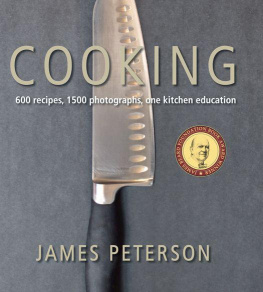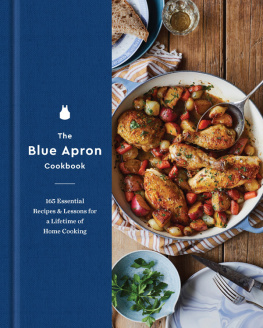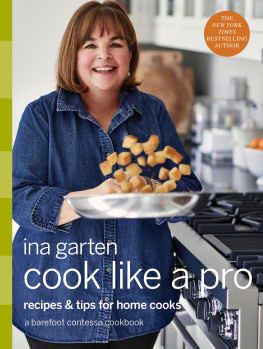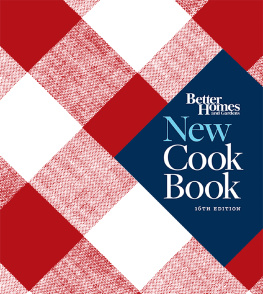Copyright 2007 by James Peterson
Photography 2007 by James Peterson
All rights reserved. Published in the United States by
Ten Speed Press, an imprint of the Crown Publishing Group,
a division of Random House, Inc., New York.
www.crownpublishing.com
www.tenspeed.com
Ten Speed Press and the Ten Speed Press colophon are registered
trademarks of Random House, Inc.
Library of Congress Cataloging-in-Publication Data
Peterson, James.
Cooking / James Peterson.
p. cm.
Summary: 600 recipes, 1500 photographs, one kitchen educationProvided by publisher.
Includes index.
1. Cookery. I. Title.
TX652.P455 2007
641.5dc22
2007021065
eISBN: 978-1-60774-406-1
v3.1
For my mother, Virginia
ACKNOWLEDGMENTS
I d like to thank all those who worked on developing and testing recipes, including Denise Michelson and Miranda Kany. Miranda Kany labored over the recipes to get them in shape; her hands also appear in some of the pictures. Laurie Knoop helped me keep organized during periods of impending chaos. Alice Piacenza, whose lovely hands grace these pages, cannot be thanked enough for her hard work, support, and encouragement. It was often a team of only the two of us producing the photography for this book and she was my muse. Id also like to thank the gentlemen at Fish Tales for their generosity and willingness to track down exotic seafood, and my butcher, Los Paisanos, wholl finally see what all my weird special requests were about. Thanks, too, to Eli Engelson-Mintz, whose hands also appear from time to time. Thanks to KitchenAid for supplying many of the pots and pans and one of the stoves that appear in the book. Converting a manuscript into a book takes an enormous effort by an almost alarming number of hard-working people. Lorena Jones, my editor, has worked immeasurably hard into the wee hours and has been agreeable even under enormous stress. Working with her has been a delight. Creative Director Nancy Austin is responsible for the books brilliant design and is so quick and versatile that we were able to make changes to the text even at the last minute. I also want to thank copyeditor Sharon Silva, editor Amanda Berne, Publicity Manager Lisa Regul, Senior Marketing Manager Debra Matsumoto, Trade Sales Director Michele Crim, and Sales VP Patricia Kelly. And then of course there are the people I always thank because they stand behind me during all my projects, including the unsuccessful or impractical ones: my partner, Zelik, and my agents, Elise and Arnold Goodman. Thank you for being there for me.
CONTENTS























LIST OF HOW-TO PHOTOGRAPHY
INTRODUCTION
A few months after my thirteenth birthday, I realized that my chemistry set didnt have all the chemicals I needed to satisfy my curiosity about what happened to various objectscoins, paperclips, flieswhen they were submerged in different acids. The boiled-down battery acid I typically used for my favorite projects was no longer enough for me, so I convinced my mother to buy me nitric acid, and a whole new series of experiments ensued. When I read that hydrofluoric acid dissolved glass, it was a must-have, and Mom was dispatched, days before Christmas, to procure it. Because hydrofluoric acid is so deadly that the fumes alone can cause blindness, I had to bicycle down to the army surplus store (in those days army surplus really was army surplus) to buy a gas mask. On Saturday afternoons, Mom would regularly peek her head into the garage to tell me my peanut butter and jelly sandwich was ready, only to see me leaning over some boiling concoction, my voice garbled by the gas mask.
Its this sameand sometimes ill-advisedcuriosity that gets me into the kitchen and keeps cooking exciting. Every time I cook, theres something a little newsomething that makes the process interesting. Like my chemistry days, each dish has to involve a discovery, which means I rarely make the same thing exactly the same way twice. In other words, learning to cook well requires a willingness to experiment and to be less than perfect. It also demands repetition. Proficiency and, ultimately, perfection require trial and error in the kitchen until you get a feel for how dishes go together. Most cooking is based on a handful of basic techniques that, once understood, will allow you to discover your own cooking style and find confidence in the kitchenmuch as my early chemistry self-education built on a growing body of experiments.















